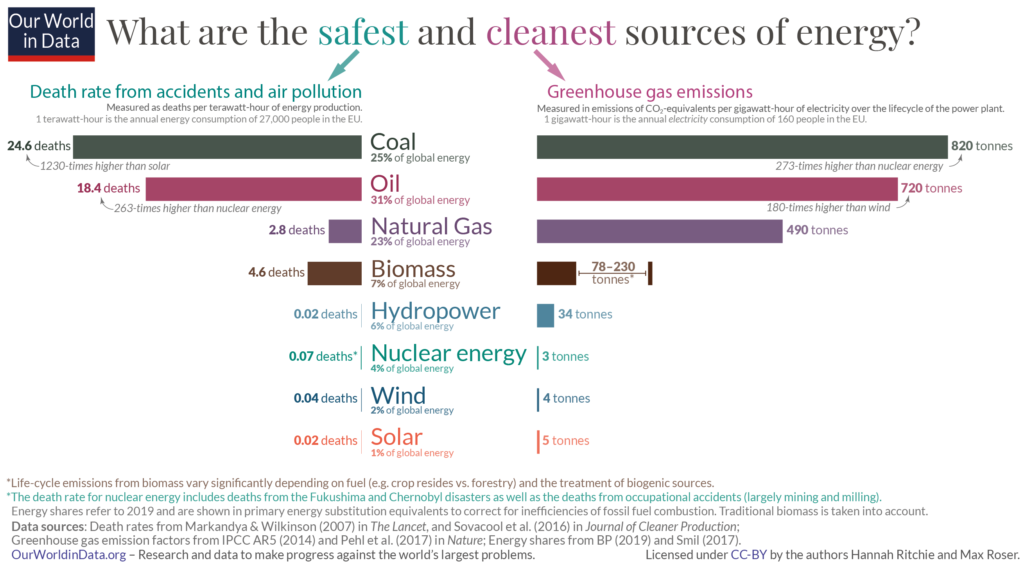New York’s Climate Plan Needs Nuclear Energy

Nuclear New York has been a regular contributor to New York State Public Service Commission’s order regarding the state’s Zero Emissions Target, including April 2024 and August 2023.
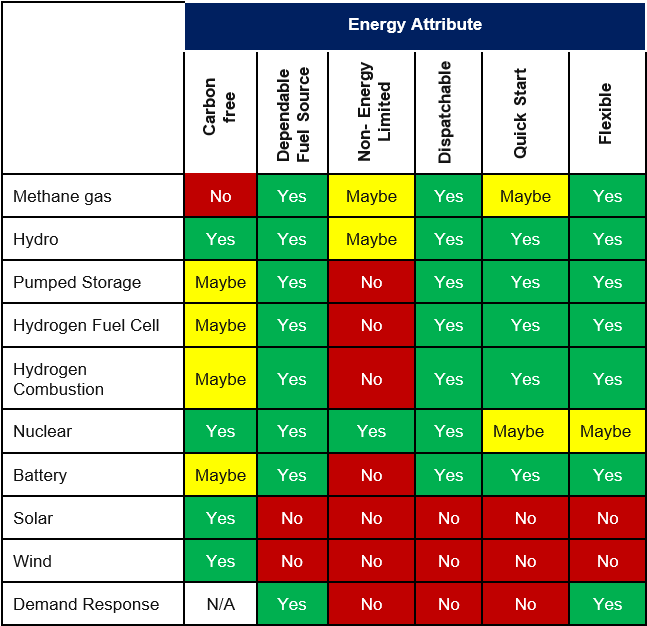
We applaud the New York State Public Service Commission for hosting the Zero Emissions by 2040 Technical Conference in December 2023 to inform how New York can implement the 2040 goal of the Climate Leadership and Community Protection Act (CLCPA): a 100% zero emission electric grid. The main issue raised was “the gap”: the disparity between New York’s zero-emission electricity supply and its zero-emission electricity demand by 2040. By pursuing predominantly intermittent energy sources, New York persists in the same energy system paradigm that is failing California and Germany. Nuclear power can ensure the reliability that New York enjoys today, largely served by fossil combustion. Nuclear is a reliable, versatile, firm, clean energy technology that can operate in baseload or load-following configurations. Repeat deployment of the same reactor design rapidly brings costs down.
We recommend establishing and pursuing technology-neutral “zero-emission” energy targets rather than sources arbitrarily deemed as “renewable.” This will allow wind and solar expansion, while preserving existing nuclear capacity and deploying new nuclear technology necessary for decarbonization and a reliable electricity system.
In November 2022, New York State Energy Research and Development Authority (NYSERDA) presented the benefits of adding nuclear generation capacity to the state’s climate plans: New Yorkers can save money, resources, and land by reducing the amount of intermittent generation capacity and storage needs. Now the state needs to plan and incentivize the development of nuclear plants to meet climate commitments while underwriting energy security and societal prosperity.
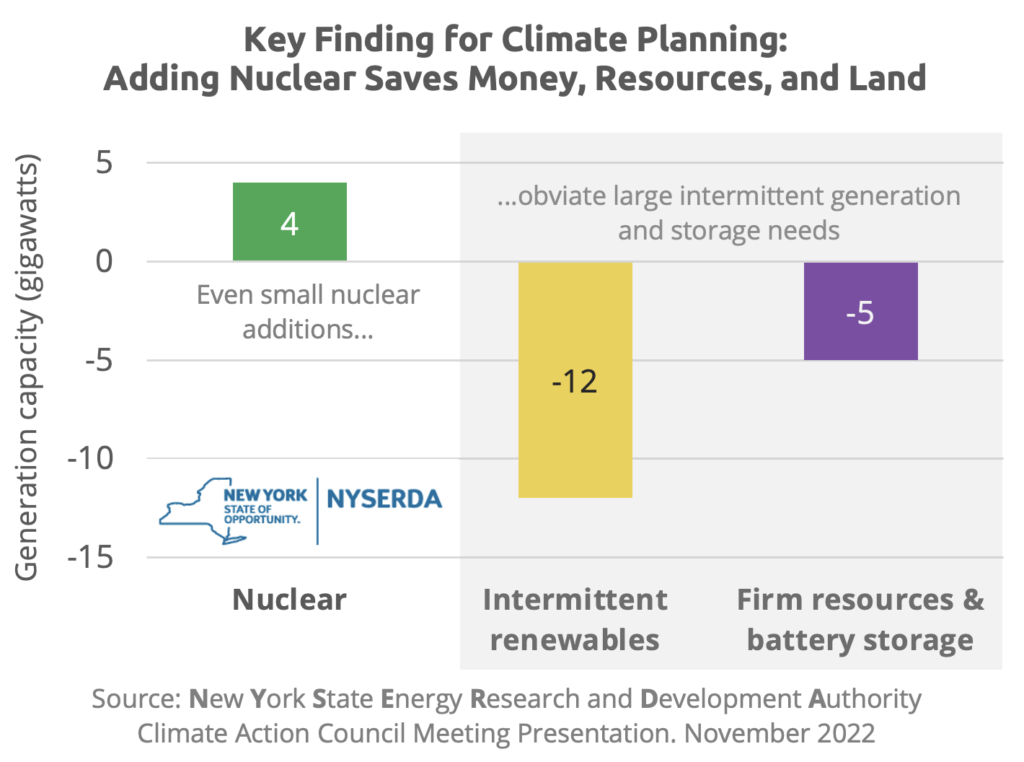
New York’s “Tale of Two Grids”: while upstate New York has one of the cleanest grids on the planet, thanks to nuclear and hydro generation, downstate New York is almost entirely fossil powered.
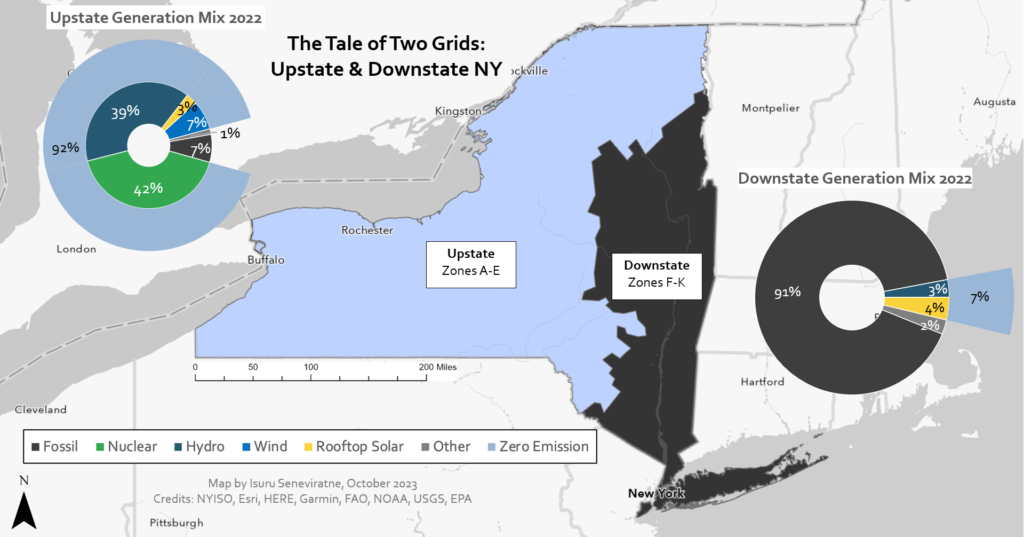
The below chart from research by Dr. Leonard Rodberg and colleagues. It illustrates the hourly gap between the 2040 demand and the output of the generation resource mix, as proposed by New York State. It accounts for solar and wind output based on New York’s weather (both onshore and offshore), and finds that for many evenings in the winter, and even some in mid-summer, there would be insufficient generation to meet the load. The power/duration profile of the residual hourly gap.
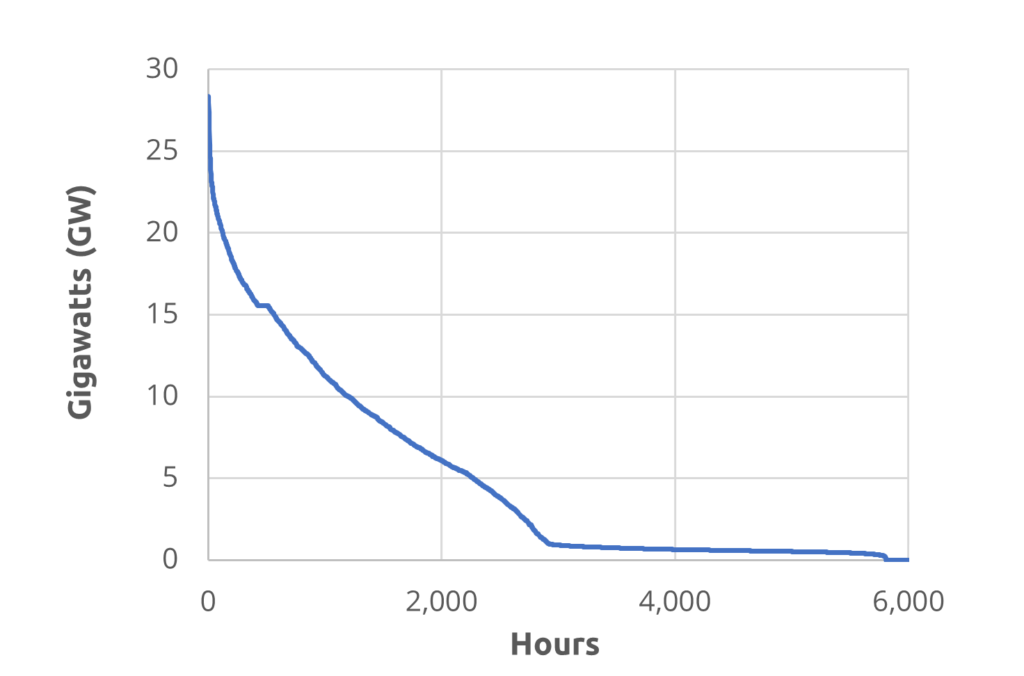
For a clean energy transition to be successful, it must be advantageous for the workers delivering it. That means that the quality of work and wages of existing fossil fuel workers must be maintained or improved upon. New jobs must build and sustain communities, with equal opportunities for all New Yorkers in diverse and desirable careers. The ability to create a just transition is impacted by our choice of technology, with some having a better potential to create high-quality jobs, strengthen communities, and support domestic supply chains than others. This was outlined in Bright Future: A More Reliable and Responsible Climate Plan for New York, co-authored by Nuclear New York, Clean Energy Jobs Coalition-NY, and Campaign for a Green Nuclear Deal.
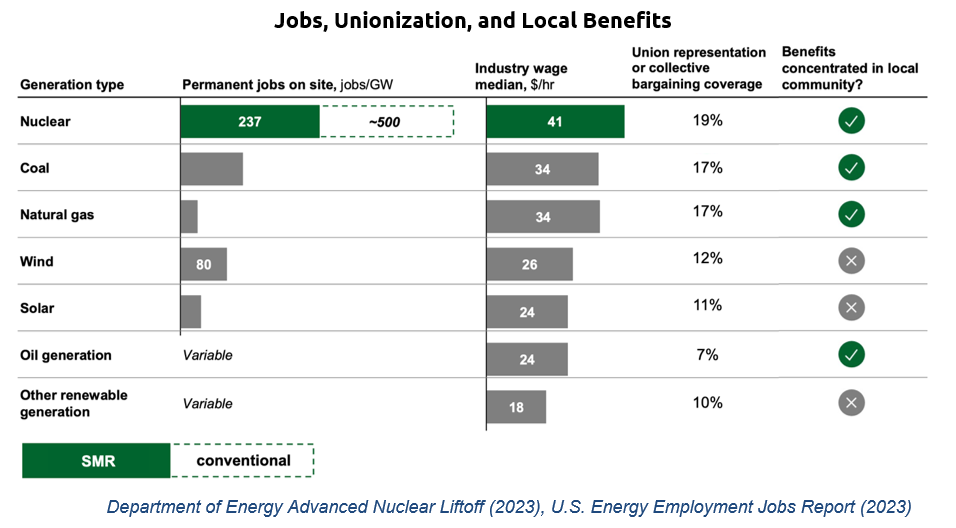
Global climate objectives fall short without nuclear power in the mix. – UN News, Aug 2021
See our nuclear primer page for more.
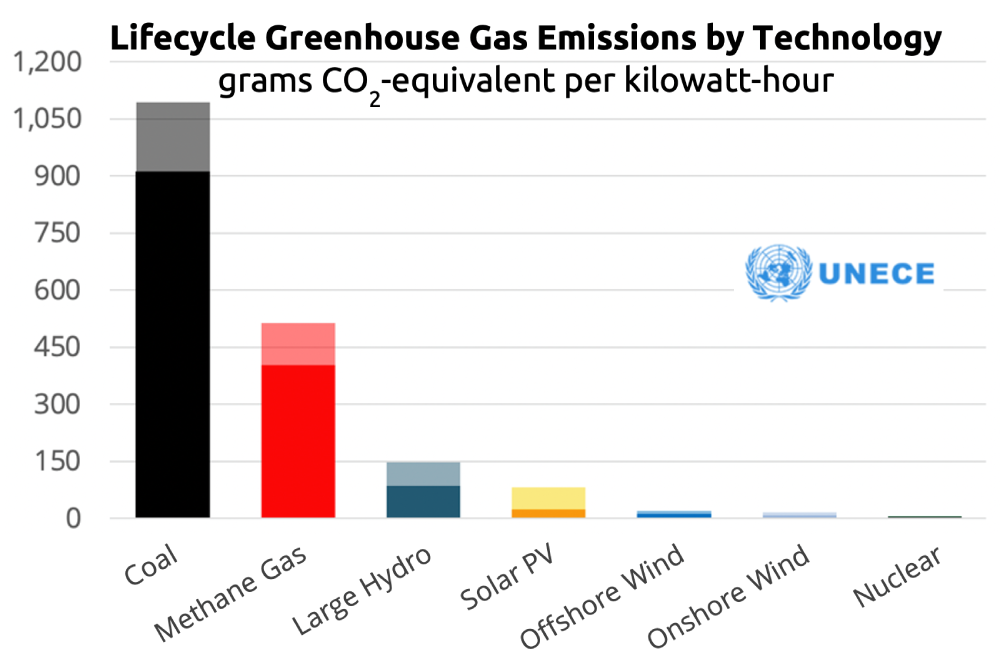
The lifecycle land use and material intensities of different decarbonization technologies must also be carefully considered in any climate plan that professes to protect the environment. Given the high population density of downstate New York, the ability to install land-intensive solar and wind is limited. Keith Schue presented on subject during the Nuclear Power Symposium to the UNGA Science Summit during Climate Week NYC 2023.
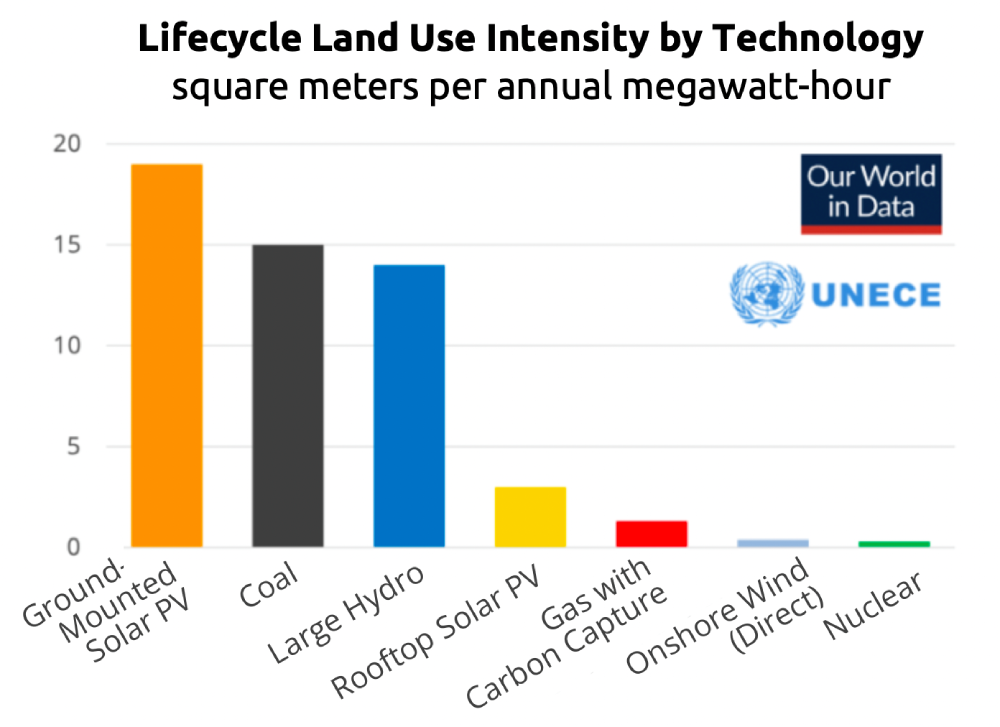
Integrating different types of carbon-free electricity incur varied grid-level costs. Firm resources — generators able to provide power on-demand regardless of the time of day or weather — like nuclear & hydro do not need extensive storage, transmission, and backup generation to ensure system reliability. System-level costs increase near-exponentially at high penetration of intermittent sources like solar & wind. Adding firm clean generation lowers the system costs of electricity. Check out our research page for more.
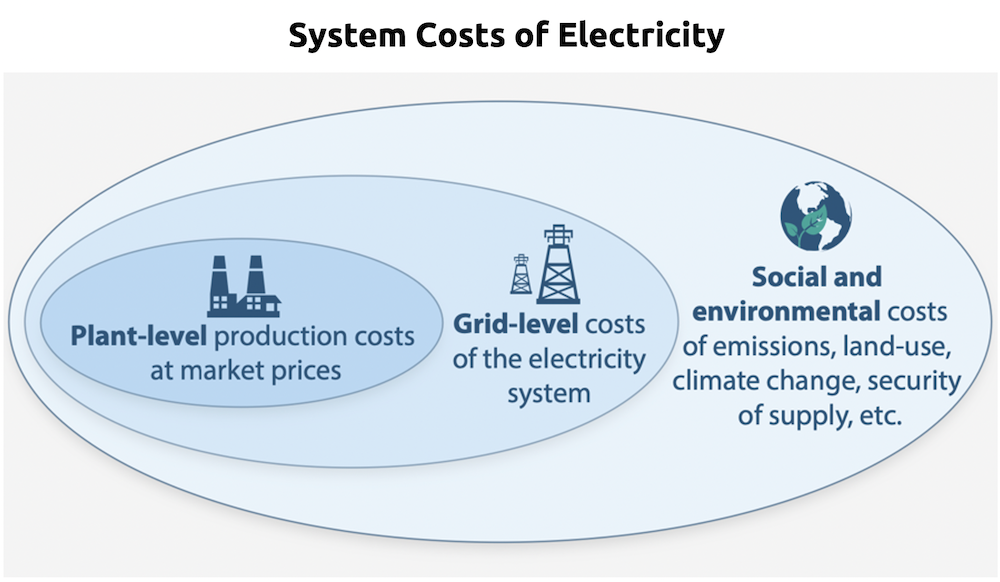
Dr. James E Hansen, Columbia Earth Institute (Times Union, April 2022)
New York belongs at the forefront of innovation, not on the sidelines. If New York is to meet its climate goals while providing ample, reliable energy, it must engage in an inclusive discussion of solutions and craft a realistic plan that recognizes the value of nuclear power today and in the future.
Climate Hawks and Union Leaders call for Nuclear Power in New York- 14 April 2022
The press conference before Albany Climate Action Council hearings featured:
– Dr. James E. Hansen, climate scientist and former director of NASA’s Goddard Institute (1:51)
– Keith Schue of New York Energy & Climate Advocates (8:38)
– Mike Bradshaw, business representative for the International Brotherhood of Electrical Workers, Local 97 (23:41)
– John J. Murphy, of the Clean Energy Jobs Coalition and International Representative for the United Association of Journeymen & Apprentices of the Plumbing and Pipefitting Industry (30:12)
Nuclear is our most scalable climate tool that safeguards nature and prosperity.
Dr. Chris Keefer, Doctors for Nuclear Energy
“There is no science-based evidence that nuclear energy does more harm to human health or to the environment than other… climate change mitigation [technologies].”
EU Joint Research Centre (highest scientific body), Mar 2021
